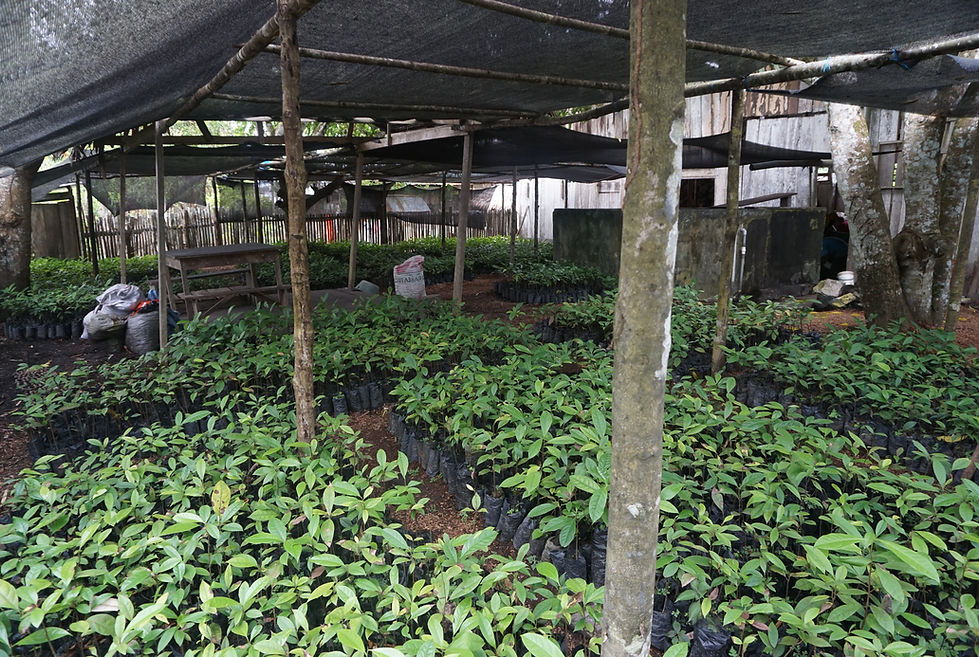
SUSTAINABILITY



CO-OPERATION with FARMERS
Since 2016, we associate with farmers who want to improve their livelihoods by reforesting rosewood on their plots. By 2019, 108 farmers are growing rosewood plants under future contract agreement with our company.




After four years since the first plantation was harvested, we have deepened our understanding about the key importance of local participation in reforestation activities. We learned that small-scale systems developed by farmers functioned. This helped to enhance their livelihoods by providing them with an economic surplus and preserve rainforest ecosystems by using pre-existing secondary forests for plantations. Alternatively, large scale agro-industrial systems enrich private owners, destroy ecosystems and undermine livelihood activities.
Farmers who have cultivated rosewood trees in the past and participate in the regulated trade of this CITES species through a formal and legal procedure have the benefit of receiving a respectful treatment in the form of verifiable weighting, immediate and full payment and ethical conduct. The key factor in the work is the close relationship between the company and the farmers. This ensures the continuity and the constant development of a system which provides wellbeing to all, nature, individuals and the whole society.





PROTECTION of PRIMARY FOREST
Because of the over-extraction of rosewood since the fifties and sixties and the continuation of extraction in lower quantities during the last decades, the natural populations of rosewood have decreased. To develop a sustainable trade of rosewood essence, our association with farmers to grow rosewood will have a positive increase in the population of the species., by letting 5% of the replanted quantity remain as seedling trees.
In the future illegal harvesting of natural populations will not be a rentable solution thanks to the availability of existing plantations and the quantity of essential oil they will give.





REFORESTATION
Artificial propagation of rosewood species via reforestation activities and/or harvesting of pre-existing rosewood plantations cultivated in agroforestry systems occur in six communities located in the district of Fernando Lores, north-eastern Peru. Four of these communities are in the buffer zone of a regional protected area. Tamshiyacu, capital of the district Fernando Lores, located one hour away by speedboat from Iquitos, capital of the region of Loreto, the site of the distillation factory, basis for the reforestation activities.





NURSERY
We operate a nursery for the supply and care of the genetic material (sapling and seeds). We associate with farmers who want to grow rosewood on their land and deliver them quantities of saplings as needed.






PLANTATIONS
Working hand in hand with the associated farmers we have developed small-scale planting systems which utilize pre-existing secondary forests for these agro-forestry plantations.
Two traditional forms of agriculture are implemented by the associated farmers:
First, the land used for plantations is a 5 to 10-year-old “purma” -a small plot of land let to rest in order to increase the nutrients of the soil by the natural production of organic matter- and the form of preparation of land for the “new crop” is also a traditional one, known as “hacer chacra” -existing trees are cut and the biomass in the land is incinerated in a controlled manner so that trees, bushes, shrubs and the rest of existing biomass serves as fertilizer for future crops.
Second, the rosewood plants are grown amidst the “purmas”, secondary shadowy forests explained above, as they would any other hardwood species. The traditional use of organic matter by farmers as compost provides a basis for the maintenance activities required for the efficient growth of this hard wood species. Organic fertilizers such as compost from rotting wood of fallen trees and the use of “tierra de hornera” a by-product of the combustion of vegetable charcoal, are traditionally used by the farmers for short and medium-term crops and this knowledge is implemented for the efficient growth of rosewood.
By 2019, we have delivered 40,000 saplings of rosewood to the 108 associated farmers and their plantations. We provide constant technical and management support.

